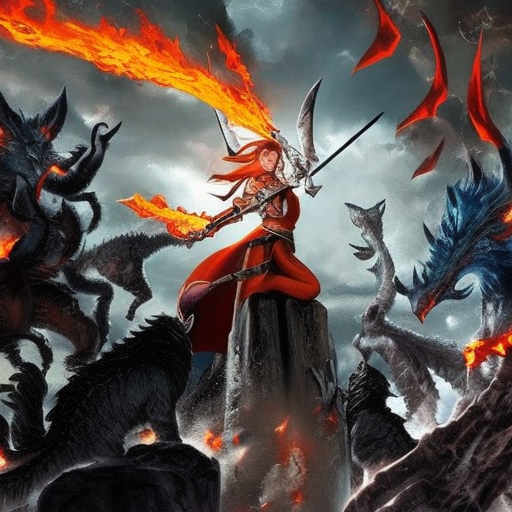Epic Tales: A Journey through Myth and Legend
Epic tales have captivated audiences for centuries, weaving together larger-than-life characters, heroic quests, and timeless themes. These stories, often rooted in mythology and folklore, have shaped cultures and inspired countless works of art and literature. From ancient epics like the “Iliad” and “Odyssey” to modern interpretations like “The Lord of the Rings,” epic tales continue to resonate with audiences around the world.
The Origins of Epic Tales
Epic tales have their roots in oral tradition, where storytellers passed down tales from generation to generation. These stories were often performed in front of an audience, using vivid language and dramatic gestures to bring the narrative to life. Over time, these oral traditions were recorded in written form, preserving the stories for future generations.
One of the earliest known examples of an epic tale is the “Epic of Gilgamesh,” an ancient Mesopotamian poem that dates back to the 18th century BCE. This epic follows the adventures of Gilgamesh, a legendary king, as he seeks immortality and grapples with themes of mortality and the nature of humanity.
Characteristics of Epic Tales
Epic tales share several common characteristics that set them apart from other forms of storytelling. These include:
1. Heroic Protagonist: Epic tales often center around a heroic protagonist who embarks on a grand quest or journey. These heroes possess extraordinary abilities and face formidable challenges along the way.
2. Supernatural Elements: Epic tales frequently incorporate supernatural elements, such as gods, monsters, and magic. These elements add an element of wonder and awe to the story.
3. Universal Themes: Epic tales explore universal themes that resonate with audiences across time and cultures. These themes can include love, honor, bravery, and the struggle between good and evil.
4. Expansive Scope: Epic tales span vast landscapes and time periods, taking readers or viewers on a sweeping journey. They often involve multiple characters and storylines that converge and diverge throughout the narrative.
Impact on Art and Literature
Epic tales have had a profound impact on art and literature throughout history. They have served as inspiration for countless works, influencing everything from paintings and sculptures to novels and films.
In the visual arts, epic tales have provided artists with rich subject matter. Painters like Peter Paul Rubens and Jacques-Louis David depicted scenes from ancient epics, capturing the drama and emotion of these stories on canvas. Sculptors, too, have been inspired by epic tales, creating intricate statues and reliefs that bring the characters to life.
In literature, epic tales have served as a foundation for storytelling. The works of Homer, such as the “Iliad” and “Odyssey,” have been studied and analyzed for centuries, shaping the way we understand narrative structure and character development. Modern authors, such as J.R.R. Tolkien and George R.R. Martin, have drawn inspiration from epic tales, creating their own expansive worlds and mythologies.
In film and television, epic tales have found a new medium for storytelling. Blockbuster franchises like “Star Wars” and “Harry Potter” draw on the epic tradition, taking audiences on epic journeys filled with adventure and heroism. These stories have become cultural touchstones, captivating audiences of all ages.
The Enduring Power of Epic Tales
Epic tales continue to captivate audiences because they tap into fundamental aspects of the human experience. They explore universal themes and emotions, offering insights into the human condition. Whether through ancient epics or modern interpretations, these stories remind us of our shared humanity and the power of storytelling.
In a world filled with distractions and short attention spans, epic tales provide a welcome escape and a chance to immerse ourselves in a grand adventure. They remind us of the power of imagination and the enduring legacy of myth and legend.












